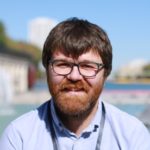Link to Pubmed [PMID] – 19438301
Link to DOI – 10.1089/ten.TEC.2009.0015
Tissue Eng Part C Methods 2010 Apr; 16(2): 185-200
Tissue-engineered scaffolds are made of biocompatible polymers with various structures, allowing cell seeding, growth, and differentiation. Noninvasive imaging methods are needed to study tissue-engineered constructs before and after implantation. Here, we show that high-resolution magnetic resonance imaging (MRI) performed on a clinical 1.5-T device is a reliable technique to assess three-dimensional structures of porous scaffolds and to validate cell-seeding procedures. A high-temperature superconducting detection coil was used to achieve a resolution of 30 x 30 x 30 microm(3) when imaging the scaffolds. Three types of structures with tuneable architectures were prepared from naturally derived polysaccharides and evaluated as scaffolds for mesenchymal stem cell (MSC) culture. To monitor cell seeding, MSCs were magnetically labeled using simple incubation with anionic citrate-coated iron-oxide nanoparticles for 30 min. Iron uptake was quantified using single-cell magnetophoresis, and cell proliferation was checked for 7 days after labeling. Three-dimensional (3D) microstructures of scaffolds were assessed using MRI, revealing lamellar or globular porous organization according to the scaffold preparation process. MSCs with different iron load (5, 12 and 31 pg of iron per cell) were seeded on scaffolds at low density (132 cells/mm(3)) and detected on 3D gradient-echo MR images according to phase distortions and areas of intensely low signal, whose size increased with cell iron load and echo time. Overall signal loss in the scaffold correlated with the number of seeded cells and their iron load. Different organizations of cells were observed depending on the scaffold architecture. After subcutaneous implantation in mice, scaffolds seeded with labeled cells could be distinguished in vivo from scaffold with nonlabeled cells by observation of signal and phase heterogeneities and by measuring the global signal loss. High-resolution 1.5-T MRI combined with efficient intracellular contrast agents shows promise for noninvasive 3D visualization of tissue-engineered constructs before and after in vivo implantation.
